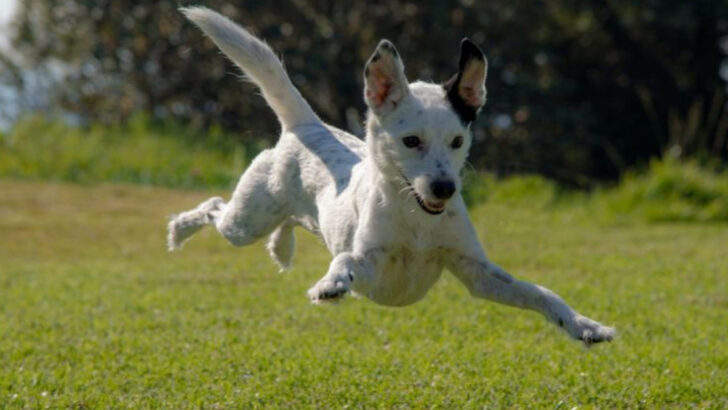Your dog isn’t just “a little restless.” They’re bouncing off the walls with energy they don’tknow how to burn.
One chewed-up shoe turns into three.
That sudden zoomie session at midnight? Not so random.
And those guilty eyes after digging up your garden? That’s not mischief—it’s desperation.
Dogs weren’t built to nap all day.
They’re born to move, chase, sniff, sprint, explore, and sometimes roll in things we’d rather not mention.
But how can you tell if your pup’s getting enough?
It’s not always obvious—until it is.
From tiny mood shifts to surprise six-pack abs (yes, that’s real), dogs have ways of showing what’s going on under the fur.
Let’s break down the red flags—and the green lights—of your dog’s fitness life.
Because a happy dog is a tired dog, and your couch deserves to live another day.
Excessive Barking

“Why does my dog bark so much?” If this question frequently crosses your mind, it might be a sign of pent-up energy. Dogs often bark excessively when they’re bored or under-stimulated. A lack of physical exercise can lead to restlessness and vocal outbursts.
Imagine a child who hasn’t had recess; similarly, your dog needs an outlet. Consider if your dog’s barking coincides with days when walks are missed.
This behavior can be their way of releasing energy and seeking attention. Ensuring regular exercise can help alleviate this issue significantly.
Destructive Behavior

With a chewed-up shoe here and a shredded cushion there, your dog might be telling you something. Destructive behavior is a classic sign of insufficient exercise. Dogs, especially energetic breeds, need physical outlets to expend their energy.
When their exercise needs aren’t met, they might channel that energy into less desirable activities, such as tearing up your favorite sneaker.
Engaging your dog in regular playtime or long walks can be beneficial. Not only does it keep them physically fit, but it also mentally stimulates them, reducing destructive tendencies.
Weight Gain

When the scales tip more than expected, it might be time to assess your dog’s activity levels. Weight gain in dogs is often a telltale sign of insufficient exercise. Just like humans, dogs need regular physical activity to maintain a healthy weight.
If your dog’s waistline starts expanding, consider their exercise regimen alongside their diet. A sedentary lifestyle can lead to obesity, which in turn, brings other health challenges.
Increasing their daily walks and incorporating playful activities can help manage their weight effectively.
Hyperactivity

Ever seen your dog zoom around the house like a whirlwind? This hyperactive behavior might be a cry for more exercise. Dogs with heaps of unspent energy often exhibit restless actions, such as sprinting in circles or incessant jumping.
Hyperactivity is particularly common in working breeds that are naturally energetic and require ample physical outlets. Without adequate exercise, they may become over-enthusiastic indoors.
Regular outdoor activities can channel this energy positively, keeping your dog calm and content at home.
Lethargy

While it might seem contradictory, lethargy can be a sign of under-exercising in dogs. When dogs don’t get enough physical activity, they may appear sluggish or uninterested in play.
It’s a cycle where the lack of exercise leads to inactivity, which further discourages movement. Older dogs might seem naturally less energetic, but if your usually active pup suddenly becomes a couch potato, consider their exercise routine.
Gradually increasing physical activity can invigorate them, promoting a healthier lifestyle.
Attention-Seeking Behavior

If your dog is constantly seeking attention, nudging you with their nose or pawing at you, it might be a sign they’re under-exercised. Dogs, being social creatures, often use these behaviors to signal their need for interaction and activity.
This behavior can be particularly evident when you’ve skipped those daily walks or play sessions. Your dog’s attempts to engage with you might be their way of saying they’re bored.
Providing them with regular exercise can help satisfy their needs for physical and social stimulation.
Poor Sleep Patterns

Ever notice your dog tossing and turning through the night? Poor sleep can be a subtle clue of insufficient exercise. Dogs who don’t get enough physical activity may struggle to settle down and rest.
Exercise plays a crucial role in regulating sleep patterns, helping dogs expend energy that otherwise might keep them awake. An under-exercised dog might exhibit signs of restlessness during the night.
Increasing their daily exercise can lead to more restful nights, benefiting both them and their humans.
Increased Whining or Whimpering

The sound of whining or whimpering can tug at any dog owner’s heartstrings. If your dog seems to be vocalizing more than usual, it could be a plea for more exercise. Dogs might whine when they’re feeling bored or restless.
This increase in vocalization is their way of expressing a need for attention and activity. Particularly in young dogs or active breeds, this behavior can intensify when their exercise regimen is lacking.
Regular outdoor adventures can alleviate this, providing the mental and physical engagement they crave.
Digging Holes
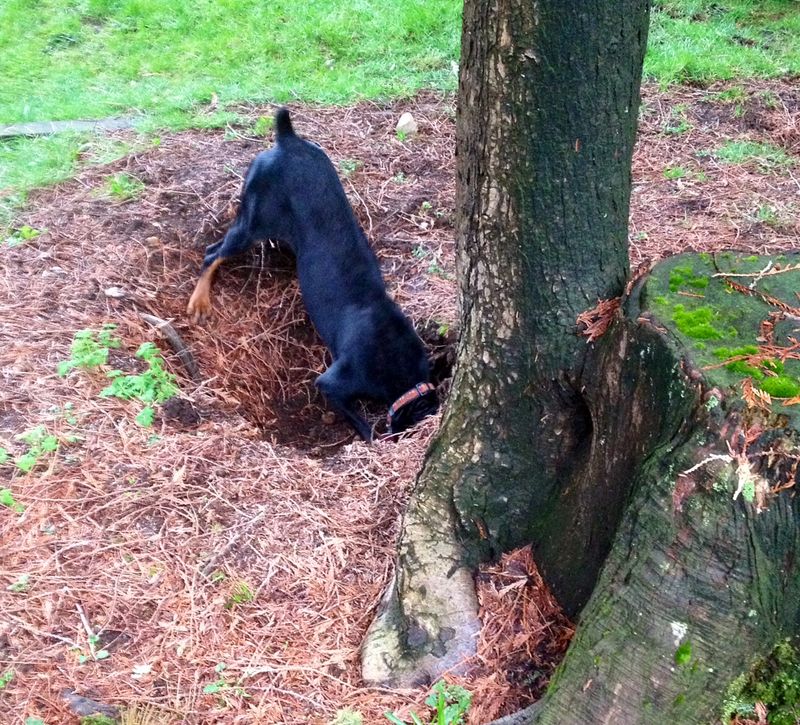
Gardens filled with mysterious holes might be more than just a landscaping issue. Dogs dig for various reasons, but one common motive is boredom due to lack of exercise. When dogs don’t get enough physical activity, they often seek alternative outlets, like digging.
This behavior might be their way of creating a fun diversion or releasing pent-up energy. Ensuring your dog receives adequate exercise can curb this tendency, saving your garden from becoming a minefield.
Interactive toys and regular walks can make a positive difference.
Loss of Training Retention

Does your dog seem to forget their training? A lack of exercise might be the culprit. Physical activity is not only vital for a dog’s body but also for their mind. A well-exercised dog is more likely to retain training commands and exhibit good behavior.
When under-exercised, dogs may show signs of forgetfulness or disobedience. This can be frustrating for both the dog and owner. Increasing their exercise can help sharpen their focus and enhance their ability to learn and follow commands.
Bright Eyes and Shiny Coat
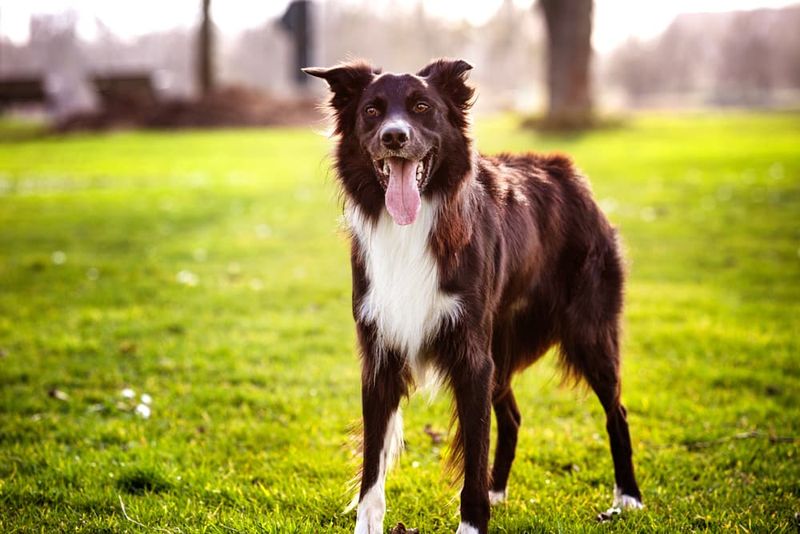
With a gleaming coat and sparkling eyes, some dogs radiate health, suggesting they are well-exercised. Regular physical activity promotes good circulation, which in turn ensures that a dog’s skin and coat are well-nourished.
A shiny coat can indicate a balanced diet and proper exercise, contributing to the overall vitality of the dog. Engaging in regular walks, runs, or play sessions contributes to maintaining this healthy appearance, reflecting the inner well-being of your furry friend.
Calm Demeanor Indoors

A dog that is calm and content indoors likely has its exercise needs well met. When dogs receive enough physical activity, they tend to be relaxed and composed at home.
A serene demeanor indoors is a sign of mental and physical satisfaction, achieved through adequate exercise. Dogs that are exercised regularly display positive behavior, showing less anxiety and restlessness.
This contentment highlights the importance of regular outdoor activities, which can ensure a harmonious home life for both dog and owner.
Steady Appetite
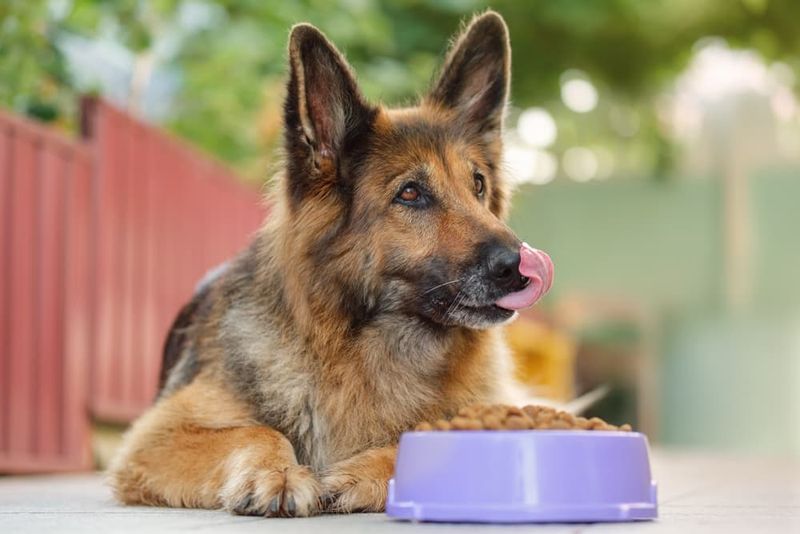
A dog with a balanced appetite often indicates they are in great physical shape. Regular exercise helps regulate metabolism, ensuring they eat well and maintain a healthy weight.
A consistent appetite reflects overall health and satisfaction, stemming from an active lifestyle. Dogs that play and exercise regularly tend to have steady, healthy eating habits, unlike those with fluctuating activity levels.
Maintaining this balance is crucial for their well-being, contributing to a longer, healthier life.
Playful and Engaged
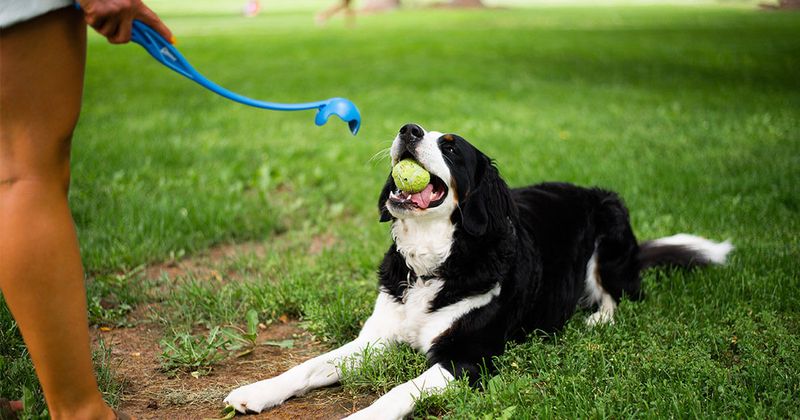
A dog that’s always ready for a game shows signs of being well-exercised. Playfulness and engagement in activities reflect a dog’s happiness and physical health.
Regular exercise keeps them alert and eager, promoting mental and social well-being. Dogs that are frequently active exhibit more enthusiasm and joy in daily interactions, whether playing fetch or engaging in other fun activities.
This lively behavior is a testament to the benefits of regular exercise, ensuring your dog remains a jubilant companion.
Enduring Energy Levels

Strong, enduring energy levels are a clear sign of a dog in good shape. Dogs that exercise regularly show consistent vitality, able to keep up with various activities without tiring easily.
This stamina results from a balanced routine that includes both physical and mental challenges. A dog with enduring energy is better equipped to handle different situations, from playful runs to serene walks.
Regular exercise nurtures this resilience, keeping your pet ready for adventure at any moment.

